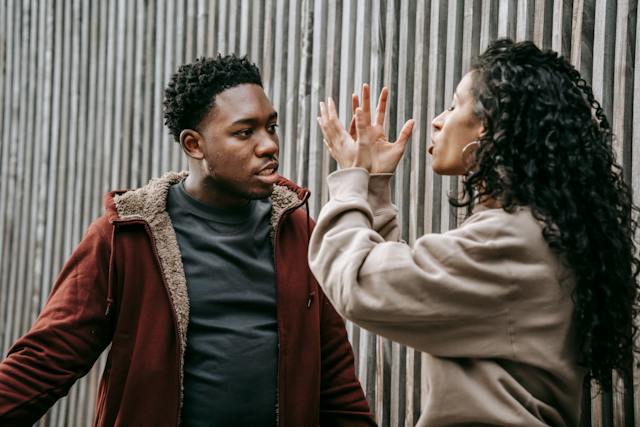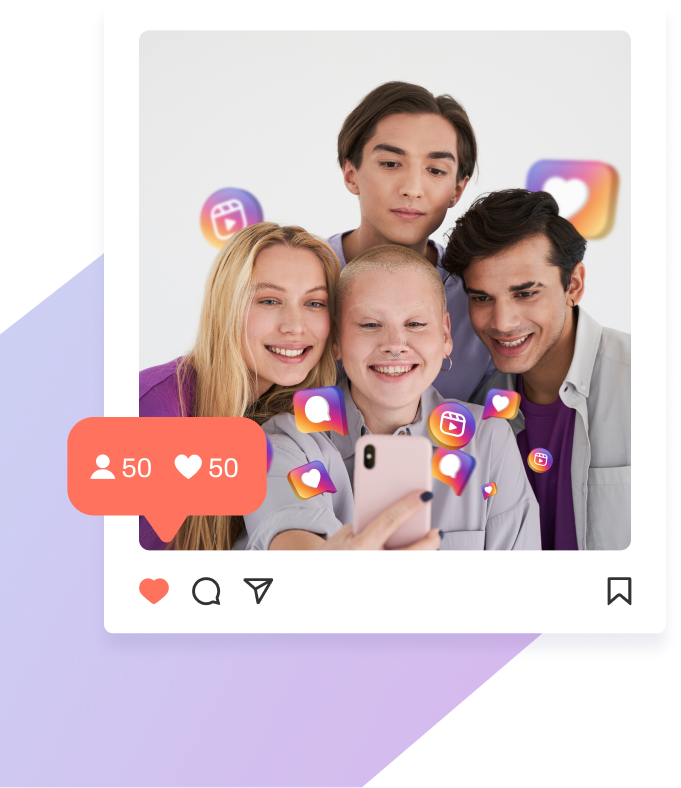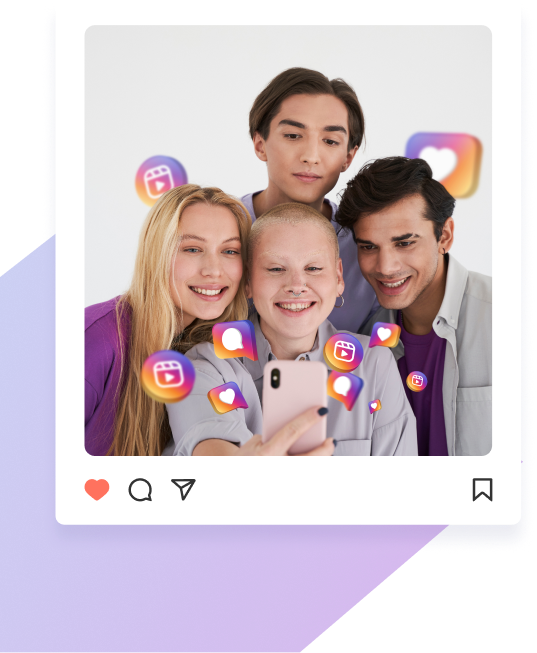How To Respond to Negative Comments and Maintain Peace on IG
Brands and influencers on Instagram often drown in messages and comments from admirers and loyal fans. They’ll hear from people who love their products, selfies, OOTDs, relatable Reels, and any aesthetic content they drop. But other times, these public figures will fall into the rabbit hole of negative feedback online. Today, we’ll discuss how to respond to negative comments and rise above them on Instagram.
People might leave a nasty comment on someone’s social media page for many reasons. Perhaps an unhappy customer wants to complain about a brand’s poor service. Maybe a harsh bully wants to be mean to someone they hate. Receiving negative comments from strangers is a natural occurrence in social media.
And sure, these comments sting—a lot. But you will win if you take a deep breath and type out a mature, informed, calm, and strategic response. You can save your online reputation, gain the respect of others, and shut down online negativity. Best of all, you can even grow your page for being authentic and standing up for what’s right.
Ready to learn how to reply to nasty comments and transcend the situation? Keep reading to discover the best ways to do it.

Why Responding to Negative Comments on Social Media Is Important
Replying to positive reviews and comments complimenting you and your brand is fun and straightforward. But learning how to respond to those hard-to-read, mean, negative comments is a little more complicated.
One eye-tracking study found that people pay more attention to negative online comments, even if there are positive ones, too. The impact of comments like these is huge, from mental health issues to the demise of a brand.
But even if these comments are harsh to read, it’s crucial to rise above the negative experience of seeing them. Remember—these comments are left on your page, where you control the conversation. Face them head-on and show them who’s boss is in a direct, understanding, and calm way.
One of the biggest reasons you should respond to negative comments is that it helps preserve your brand image. Responding to them shows your audience that you can stand up for your brand. It also shows that you can take constructive feedback while still maintaining an air of positivity online. This makes you more likable, authentic, and positive.
Another reason why it’s best to respond to negative comments is to pacify who posted them in the first place. It shows that you listen to people’s concerns and value them enough to address them, even if you disagree. It de-escalates situations so they don’t blow out of proportion and become a full-on controversy about your brand. If the latter happens, you may lose followers, and you don’t want that to happen.
6 Ill-Intended Remarks: How Do You Respond to Negative Comments Like These?
There are many types of negative feedback online. Some are personal, and some have to do with your services or products. How you respond to each negative comment depends on the situation and context.
So, how do you respond to negative comments, given that each one is so different? Here are six types of ill-intended online comments and how you should approach replying to each.
1. Personal Attacks Like Bullying and Name-Calling
Perhaps the most common negative comment on social media is some form of bullying. People might call you names and attack your appearance and personality to hurt your feelings. These comments can cause emotional distress, insecurity, and even depression and anxiety, especially if they aren’t addressed properly.
Of course, ignoring comments like this works like a charm for some people. Ignorance is bliss, after all. They might even delete those comments so they don’t see them anymore. Out of sight, out of mind, right?
But some people will feel a strong urge to reply to comments from bullies. This is a natural response, especially when you can defend yourself from these meanies. But how can you respond to ill-intended quips with grace and confidence even when hurt?
First, take a deep breath and meditate to feel composed and calm. You can’t just respond with the first thing that comes to mind, especially when your emotions are high. You might end up saying something you’ll regret. Remember that your followers can see everything you type next.
Instead of being mean in return, set boundaries. In your comments section, discuss the positive and safe environment you want. This will tell people two things—that you have thick skin and won’t stand for bullies. Here are a couple of responses you might consider saying to a bully:
- “Well, that was unnecessary. Thanks for your thoughts, but hateful language isn’t welcome here. See ya!”
- “If you can’t say anything nice, don’t say anything at all. My page, my rules.”
- “We don’t tolerate disrespect here. I don’t think your comment warrants a defense from my end.”

2. People Disagreeing With Your Stand on Something
Many people will go on Instagram and post their opinions on controversial topics. Maybe they’ll post content supporting a social movement or share their thoughts on the political climate. This is more than welcome on the platform. After all, Instagram is a place where you can express yourself freely as long as you’re respectful.
But some people can blast you in the comments section for sharing your opinion. Some will calmly share their thoughts, but others will be rude when disagreeing with you.
What’s important is not to lose your cool when responding to comments like this. You should be calm and collected. Acknowledge their opinion is valid, but defend your own if you have to. At the same time, have a mature, productive, constructive discussion about the things you disagree on. It might be nice learning new things from people who have different views from yours.
Of course, you should always know when to disengage from these people. If they’re unwilling to converse respectfully, it’s time to cut the conversation short before it implodes. If it feels like the discussion is going nowhere, here are some things you can say:
- “I understand that you believe in something different. I think we can agree to disagree.”
- “Thanks for being passionate about this topic. But I feel there is a better, more mature way to discuss this topic. Feel free to DM me about it once you’ve cooled down!”
- “I respect your opinion on this. To each his own! Let’s leave it at that, shall we?”

3. Complaints About Your Product or Service
Personal accounts and influencers aren’t the only Instagram users who face negative comments from others. Brands get negative feedback for their products and services every day.
Social media marketing is extremely important for brands today. It’s an excellent way to reach a broad audience online. But you have to remember that hearing nasty comments about your company comes with the territory. The most you can do is master the art of responding to customer complaints in the comments.
Responding to customer complaints as fast and as smart as possible can help maintain your good online reputation. Reply to comments promptly and with tons of empathy. Remember—your customer is frustrated with their negative experience with your brand. They’re not angrily typing away for no reason. Your job is to help them solve the issue.
Say something along these lines when you reply to comments from angry customers:
- “Sorry to hear about this experience! Do you mind sending us a direct message so we can work out a solution?”
- “Thanks for bringing this to our attention! We take your feedback seriously. We’ll see how we can improve our products moving forward.”
By acknowledging their issues, you can make your customers feel valued. This helps build trust and rapport with them, allowing them to soften up even after their negative experience. Remember to balance professionalism and empathy, and you’ll be golden.
4. Discriminatory Comments Based on Someone’s Race, Gender, etc.
Instagram doesn’t tolerate hate speech or discrimination on their platform. Their community guidelines clearly state that it’s not okay to attack someone for their race, gender, sexual orientation, disabilities, or diseases.
Don’t be a bystander if you see negative comments wherein someone attacks another based on these things. Tell them that Instagram doesn’t tolerate violent comments like those. Be direct and firmly address the discrimination outright. Here are some things you can say to call their attention:
- “We do not tolerate discrimination anywhere on this platform. If you want to share your thoughts on something, you can do it without being racist/sexist/ableist.”
- “Instagram is a platform that embraces diversity and inclusion. We don’t need your negativity here.”
- “I could easily report you to Instagram for violating their community guidelines for this if you don’t apologize to her.”
- “Misogyny has no place in this discussion. Come back when you can hold a conversation without hate speech.”
By condemning comments like these on Instagram, you’re doing your part to keep it a safe space for the community.

5. Customers Comparing Your Product to That of a Competitor Brand
Negative feedback for brands doesn’t always come in the form of angry complaints. Sometimes, they’re sassy comments comparing your product to another brand’s. Maybe they’ll leave a comment like, “This product is okay, but the one by [competitor brand] is ten times better.”
While this isn’t inherently “negative,” it still puts your brand in a tight spot and a bad light. Your job now is to deflect their attention from the competitor and bring it back to yours. Think of it as an opportunity to remind your customer of all the good things about your brand. It’s time to save your online reputation.
When you respond to comments like these, put your products or service’s features centerstage. Talk about the unique features and benefits one could get out of them. If you can, direct the commenter to positive reviews from other happy customers. Here are a couple of professional and positive responses that can help you do that:
- “Thanks for your thoughts, but we think our product is pretty cool, too! Unlike other brands, it has [unique features that the competitor’s product doesn’t have].”
- “Sorry to hear that. We hope you can have a better experience with [your brand name] next time. You can check out positive reviews from our happy patrons in our Instagram Story Highlights!”
6. Dangerous Threats From Online Stalkers and Harassers
Dealing with mean bullies and unhappy customers is one thing. But it’s an entirely different ball game if you see comments that make you feel physically unsafe.
Throughout this guide, we’ve taught you how to reply to negative comments and stand your ground. But if you receive threatening comments from stalkers or harassers on social media, you don’t have to respond. The best action is to prioritize your safety and not engaging with these people directly.
Instead, here are the things you can do in response to receiving dangerous, negative comments from a stalker:
- Take screenshots of their comments. Keep this documentation in case you need to report it to the police, especially if the harassment escalates.
- Report their behavior to Instagram so the platform can act against them. If you can, ask friends and family to report the account.
- Go to your privacy settings and keep your Instagram profile private.
- Block them immediately so they don’t have a way to reach you on Instagram.
- If they try to reach out through any other platform—online or offline—call the authorities and seek help.
How To Block Negative Comments on Instagram To Maintain Positivity on Your Page
Are you getting negative comments from the same person over and over again? Are they disruptive on your page and making your other followers feel unsafe or uncomfortable? Maybe it’s time to go to extreme measures and block them.
When you block someone on Instagram, they’ll lose all access to your profile. If they look you up in the app’s search feature, your username won’t appear. That means they can’t leave any more nasty comments on your posts or even send you direct messages. It’s a great way to take control of your page and eliminate that user’s negativity once and for all.
Here’s how to block negative comments on Instagram by keeping someone out of your page for good:
1. Go to the profile of the person you want to block.
2. Click the three dots on the upper-right corner of their page.
3. Click the “Block” option.
4. Confirm your decision to block them by clicking the blue “Block” button again on the message that pops up.
If Blocking Seems Too Harsh, Consider Restricting Someone Instead
If you feel blocking is too harsh and don’t want drama because of it, consider restricting them instead. Restricting someone is milder than blocking, but it also protects your page from negativity.
When you restrict someone on Instagram, they can still access your page. They can review your posts, like your content, and even comment. The catch is that they are the only ones who will be able to see their comments on your posts.
View their comments on your content, but the system automatically hides them. To see what they said in the comment, click the “See comment” button. Otherwise, no one will see what they’ve written under your post. This helps maintain the peace in your comments section without being aggressive and blocking someone outright.
People you restrict also won’t be able to see if you’re online. It won’t go to your inbox if they send you a direct message. Instead, it will go to your Message Requests folder. As a result, you minimize the disruption and negativity in your personal social media space without causing drama.
Here’s how to restrict someone on Instagram who is fostering negativity and bad energy in your comments section:
1. Go to the profile of the user you want to restrict.
2. Click on the three dots at the top of their profile.
3. Select “Restrict.” A confirmation message should show you that you’ve successfully restricted them. You’ll also see a reminder of the implications of restricting someone on the app.
Knowing How To Respond to Negative Comments Can Indirectly Grow Your Fanbase
Being able to respond to negative comments with grace doesn’t just make your brand look cool, calm, and collected. It’s also a marketing strategy that can create a positive brand image and public sentiment. By standing up against bullies and handling complaints in a mature, meaningful way, you can rise against negativity online.
And what happens when people positively perceive your brand and agree with how you handle bad situations? That’s right—you get more followers. Handling negative feedback well can make you more attractive to customers and potential fans. You might see an uptick in your follower count if you reply to nasty comments in a fantastic, well-thought-out manner.
But knowing how to respond to negative comments isn’t the only way to grow on Instagram. Your growth strategy needs to be well-rounded and content-focused. That’s where Path Social can help.
With Path Social’s AI-powered targeting algorithm, you can push your content to your niche audience. That means more eyeballs on your posts and, consequently, more likes, comments, and shares. Getting more real, authentic followers is just the cherry on top! So, what are you waiting for? Work with Path Social and start growing your online fanbase today.


Want Free Instagram
Followers?
Let our AI targeted organic growth work for you for free
Get Free Instagram Followers







